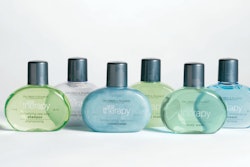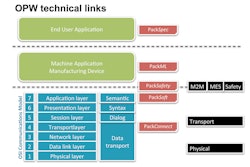
Cosmetics are regulated by the Food and Drug Administration with the lightest of touches. But when a Congressional hearing in March examined just how the Food and Drug Administration does what it does, the chances looked good that FDA soon would soon get the power to do more.
Cosmetics are defined in the law as “articles intended to be rubbed, poured, sprinkled, or sprayed on, introduced into, or otherwise applied to the human body or any part thereof for cleansing, beautifying, promoting attractiveness, or altering the appearance,” plus components of any such articles, but not including soap. So that’s deodorants, lipsticks, perfumes, shampoos, skin moisturizers, make-up, and hair color, for example.
A review of the key features of current cosmetic regulation makes clear that the emphasis is on voluntary compliance:
• Cosmetic product makers are responsible for assuring the safety of their ingredients and products (though a few ingredient types are banned, such as chloroform and substances containing mercury), and thus they don’t need FDA’s OK before marketing products or using specific ingredients (except for color additives, which do require prior FDA approval or batch certification).
• Regulations call for cosmetics labels to feature some basic information, and it’s up to the companies to make sure they get that right.
• Cosmetics companies have no obligation to report adverse reactions to their products, as do drug or dietary supplement makers.
• If a safety issue arises about a cosmetic product, FDA can ask the makers to remove it, and if they don’t, FDA can take enforcement actions—seizure, injunction, criminal prosecution—against the companies and responsible individuals.
• FDA asks companies to register themselves with FDA, and about 1,600 have done so, and to voluntarily file ingredient statements with FDA, and the agency has lists for about 39,000 products, though FDA thinks that only about a third of manufacturers filed ingredients lists.
• Also, experts review the safety of cosmetics via another voluntary program, supported by both industry and FDA. The Cosmetic Ingredient Review panel has been operating since 1976.
In the March hearing, with several Congressional bills on the table to toughen cosmetic regulation, FDA said today’s cosmetics present new challenges. For example, many new types of cosmetic products have emerged, and an increasing number of countries are sending cosmetics to the U.S.
New ingredients that incorporate nanotechnology can potentially raise new and different safety issues as well, said FDA. Additionally, FDA is challenged when cosmetic products blur the line between cosmetics and drugs, either because they are labeled with drug claims (any effect on the structure or function of the body) or because they contain ingredients touted as ‘active’ that are also known as ingredients in drug products. An example, says FDA, is retinol in anti-wrinkle creams, also found in some OTC drugs. This is not a new issue, as FDA has been sending Warning Letters to makers of what industry calls ‘cosmeceuticals’ since at least the 1980’s, but it seems to ebb and flow over time.
So with these challenges old and new, FDA is asking for some changes in the law to allow it to do its job differently. It is asking Congress to allow it to require cosmetic makers to register with FDA and be required to submit their ingredients, rather than keeping that voluntary, and to charge a registration fee as well. FDA estimates that would give them $19 million in new money to work with to set up guidance and safety standards, and pursue needed research on the safety of some ingredients.
Even the key trade organization is asking for expanded FDA power. The Personal Care Products Council wants to see the voluntary safety review of ingredients made more formal and have FDA review the safety determinations by the independent CIR expert panel in past years. They support making registration and ingredient listings mandatory, and also want adverse reaction reporting made mandatory, along with Good Manufacturing Practices regulations to assure more consistent cosmetic-making.
The PCPC told the congressional committee it’s well past time to update the legal framework. They support these steps as part of the first significant legal change regarding cosmetics since 1938, when the Federal Food, Drug and Cosmetic Act was first passed containing the key provisions of the present law.
Why would a trade organization advocate for more regulation, rather than less? Well, despite the prevalence of statements about government action always hurting business, sometimes exactly what an industry needs is clear, fair and actively enforced standards, especially on safety issues, to enhance consumer trust in the whole industry, and minimize competition with unscrupulous players. That helps thwart state laws, too, which don’t necessarily match one another and which might be tougher than federal standards. Indeed, California already has in place a cosmetic reporting law.
New regulatory requirements that differ from state to state can be expected to make business more complex and more expensive, especially for smaller players in an industry, but so might new federal requirements.
The safety of cosmetic ingredients has been a subject of controversy for some time. [See, for example, www.bit.ly/pwe00402], and with even a big industry trade group calling for more mandatory requirements, it’s possible we’ll see real changes in the law in coming months or years.

























